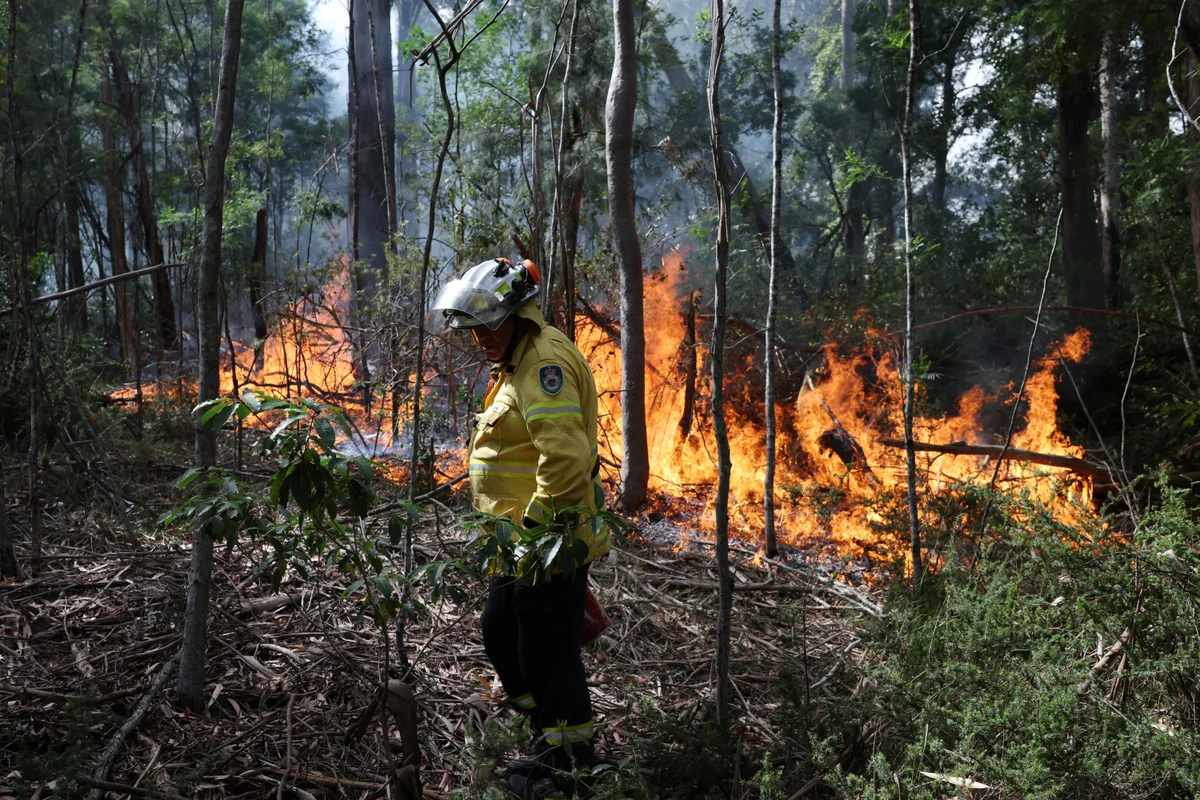Copyright independent

Spring temperatures in parts of Sydney neared 40C on Wednesday and hot, dry winds fanned dozens of bush and grass fires in New South Wales, prompting rare “red” wind warnings and wildfire emergencies across the Tasman in New Zealand. The Bureau of Meteorology said a dome of hot air built over the Australian interior on Tuesday and was swept east, delivering an unusually early spring heatwave. Sydney’s Observatory Hill peaked at 37C at 1.54pm, just shy of the 39C forecast, while western suburbs including Bankstown and Penrith Lakes set October records at 39.8C and 39.5C, respectively. On Tuesday, both NSW and Queensland logged their hottest October temperatures since records began in 1910. By mid-afternoon, 36 fires were burning in NSW, with nine uncontained, authorities said, as wind gusts neared 100kmph. In response, total fire bans were declared across Greater Sydney, the Illawarra Shoalhaven, the Greater Hunter, and some parts of the state’s west. Around 2,000 properties were left without power. “It is still spring and we are seeing these incredibly warm temperatures,” Angus Hines, a Bureau forecaster, said. On Sydney's popular Bondi Beach, Tony Evans, a retiree visiting from England, said he was surprised by the heat of the wind. "It’s really hot and what surprised me is the temperature of the wind,” he told Reuters, “it's just no cooling effect and actually it seems like it's a heating effect and it’s too warm to be comfortable.” Local crews faced fast-moving vegetation fires under “watch and act” alerts, including West Wallsend near Newcastle, while other blazes burned beside the Pacific Highway near Karuah, Rowena in the north, and Cullendore near the Queensland border. Most were listed as being under control or being controlled by mid-afternoon. NSW Health urged people to stay indoors during the hottest hours, keep their homes cool, and hydrate, warning heat could exacerbate existing health conditions and even be life-threatening. Across the Tasman Sea in New Zealand, the weather service issued red wind warnings, reserved for only the most extreme events, for Canterbury, Wellington and Wairarapa, with gusts of up to 150kmph forecast in places. A state of emergency was declared in Canterbury, while firefighters battled wildfires near Kaikōura on the South Island and in Hawke’s Bay on the North Island. Several properties, including five homes, were destroyed. Authorities urged people to stay indoors, avoid travel and prepare for power and communications outages. Fire and weather scientists said the wind would be as decisive as the heat in how soon the fires could be controlled. “Windy conditions can rapidly dry out fine fuels, such as grasses, making them highly flammable even after rain,” Shana Gross, fire ecologist at New Zealand’s Bioeconomy Science Institute, said. “Such conditions also increase the risk of fire spreading quickly, hindering effective response efforts.” Nathanael Melia, founding director at Climate Prescience and senior research fellow at the Victoria University of Wellington, noted that Kaikōura’s dramatic topography could produce some of the country’s most extreme wind behaviour. “Unlike your birthday candles, wildfires thrive on wind,” he said, noting that winds “suck out moisture from vegetation… and carpet bomb embers” downwind. With red warnings in place for Thursday, he said crews would hope that rain “can make it over the divide, which it often fails to do”. Nicola Day, a senior lecturer in biological sciences at Victoria University, said the sight of spring vegetation dry enough to carry fire was “a bit concerning”. “The wind is drying everything out and fires are carried very fast in this extreme wind,” she said, adding some native landscapes could regenerate quickly depending on what burned. The fire season in southeast Australia typically runs November to February, and the current burst of heat is weeks early. The Bureau pointed out that temperatures on parts of the east coast had been running 10-16C above the October average, with the hot airmass swept east by a low-pressure system over southern Australia. The same system was delivering damaging gusts through Victoria – where the State Emergency Service fielded hundreds of calls for downed trees on Wednesday – and into NSW’s south. New Zealand’s warnings followed a day of severe weather that left thousands without power and killed a man in a Wellington park when a tree branch fell. Total fire and fireworks bans were introduced in parts of both islands ahead of Thursday’s peak winds. Australia’s fire authorities and health services said the next 24-48 hours would be critical. NSW Rural Fire Service urged households to clean up around their properties, finalise bushfire survival plans and pay close attention to local alerts as winds swung westerly to southwesterly with possible thunderstorms. “These conditions can come up really quickly,” Rural Fire Service commissioner Trent Curtin said. Australia’s national average temperature is now about 1.5C higher than in 1910, the Bureau of Meteorology notes, and the climate crisis is increasing the frequency and severity of extreme heat and making bushfires more likely.



